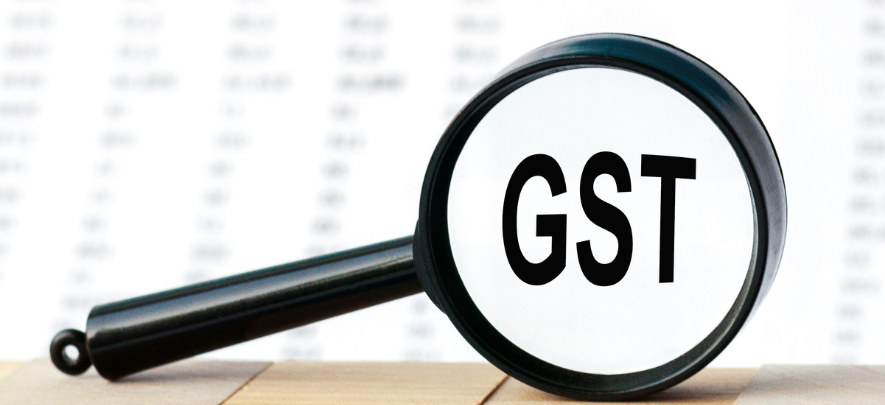Recent Challenges and Issues with GST

GST
103 week ago — 7 min read
An indirect tax known as the Goods and Services Tax (GST) was implemented in India on July 1st, 2017. A single tax system took the role of numerous taxes including the central excise duty, service tax, value-added tax, etc. The primary goals of GST Registration were to harmonise tax rates across the nation, prevent tax evasion, and simplify the tax code. The introduction of GST, however, has not gone well, and there have also been a number of difficulties with GST return filing. We’ll talk about the key concerns and how they affect businesses in this article.
Challenges and Problems with GST
There are many aspects that make GST challenging and problematic. These are a few of the key elements:
- Complex Tax Structure: The GST faces many difficulties because of its intricate tax structure. There are four tax brackets in the GST system: 5%, 12%, 18%, and 28%. Rough precious and semi-precious stones are subject to a special fee of 0.25%, while gold is subject to a special rate of 3%. Because of the complex tax structure, it is challenging for enterprises to comprehend and follow the law. Confusion among taxpayers due to the complex tax structure has increased compliance expenses and lawsuits.
- Mistakes in technology: The GST system mandates that taxpayers submit their returns online via the GST portal. The platform has had many technological issues, making it challenging for taxpayers to submit their returns on time. Technical difficulties have also caused improper GST Return submission, which has resulted in penalties and fines. To resolve the technological challenges, The GST Network (GSTN), which oversees the GST interface, has taken a number of actions. However, the issue still exists, and taxpayers still struggle with completing erroneous GST Returns.
- High costs of compliance: GST compliance requires a number of different tasks, including GST registration, filing GST returns, keeping records, and being subject to audits. Significant expenses are associated with these efforts, which are covered by enterprises. Particularly for small and medium-sized businesses (SMEs), the costs associated with compliance have dramatically increased under GST. It is challenging for SMEs to function and compete with bigger companies because of the high compliance costs.
- Issues with Input Tax Credit (ITC): One important aspect of GST is that it enables businesses to claim a credit for the tax paid on the inputs used to produce products or services. However, a number of problems have emerged with the GST ITC structure. The ITC refund being delayed is the main problem. Businesses are experiencing cash flow problems due to, a lack of working capital brought on by the refund’s delay.
- GST Rates: Since the advent of the tax system, GST rates have been a subject of dispute. Since they directly affect the average person, the high tax rates on necessities have drawn criticism. The government has reduced the tax rates on several goods and services through many adjustments to the tax laws. However, businesses and customers are still concerned about the high tax rates on several goods and services.
- E-way Bill System: An E-way Bill is a required document whenever goods worth more than Rs. 50,000 are transported. Numerous issues, including technical difficulties and delays in bill production, have plagued the GST E-way Bill system. Due to the delay in the drafting of the E-way Bill, goods have been held back, and company compliance costs have increased.
Business Effects of GST Challenges
Businesses, particularly SMEs, have been greatly impacted by the difficulties and issues with GST.
- Increasing compliance expenses: Due to the high compliance costs associated with the GST, SMEs have found it challenging to operate and compete with larger businesses. A variety of tasks, including GST registration, GST return filing, record keeping, and audits, are included in the costs related to compliance. SME profitability and competitiveness have suffered as a result of the rising costs, which have put a heavy burden on them.
- Cash Flow Problems: Because of a lack of operational capital, firms are having cash flow problems as a result of the delay in obtaining the ITC return. Businesses have found it challenging to manage their finances because of, the refund delay, which has limited their ability to invest and grow.
- Increased Litigation: Because of the complicated tax structure and technological issues, there has been more litigation due to, the confusion among taxpayers. The increased litigation negatively impacts the operations of the corporations concerned by driving up legal costs and delaying the resolution of disputes.
- Having difficulties Adapting to the New structure: The new tax structure that the GST has implemented is proving to be challenging for many firms. Businesses have found it challenging to comprehend and comply with the new system due to changes in tax rates, compliance procedures, and documentation requirements. Costs of compliance have increased as a result, and output has decreased.
- Impact on Consumer Spending: Consumer spending has been negatively impacted by the high tax rates on a variety of goods and services. Consumer spending has decreased due to, consumers’ declining disposable income brought on by rising costs for goods and services. Businesses, especially those that depend on consumer spending, are severely impacted by the decline in it.
Conclusion
An important step towards streamlining the tax system and establishing uniform tax rates across the nation was the introduction of the GST in India. The GST’s implementation, however, has not gone well unformly. There are several difficulties and issues that have developed, like erroneous GST registration or GST return submission.
Businesses, especially SMEs, have been significantly impacted by the complex tax structure, technological challenges, high compliance costs, ITC problems, GST rates, and weaknesses in the E-way Bill system. The difficulties have led to higher compliance costs, problems with cash flow, an increase in lawsuits, difficulties integrating the new system, and a detrimental effect on consumer spending. Despite the government’s efforts to address the difficulties and problems with GST, there is still much to be done before GST is effectively incorporated into India’s tax system.
Also read: How to register for GST online?
To explore business opportunities, link with us by clicking on the 'Connect' button on our eBiz Card.
Image source: Canva
Disclaimer: The views and opinions expressed in this article are those of the author and do not necessarily reflect the views, official policy or position of GlobalLinker.
View Ishita 's profile
SME Inspirations
Most read this week












Comments
Share this content
Please login or Register to join the discussion